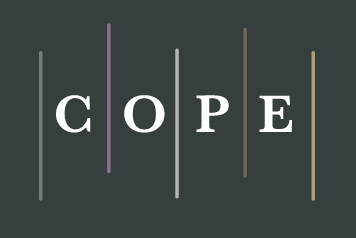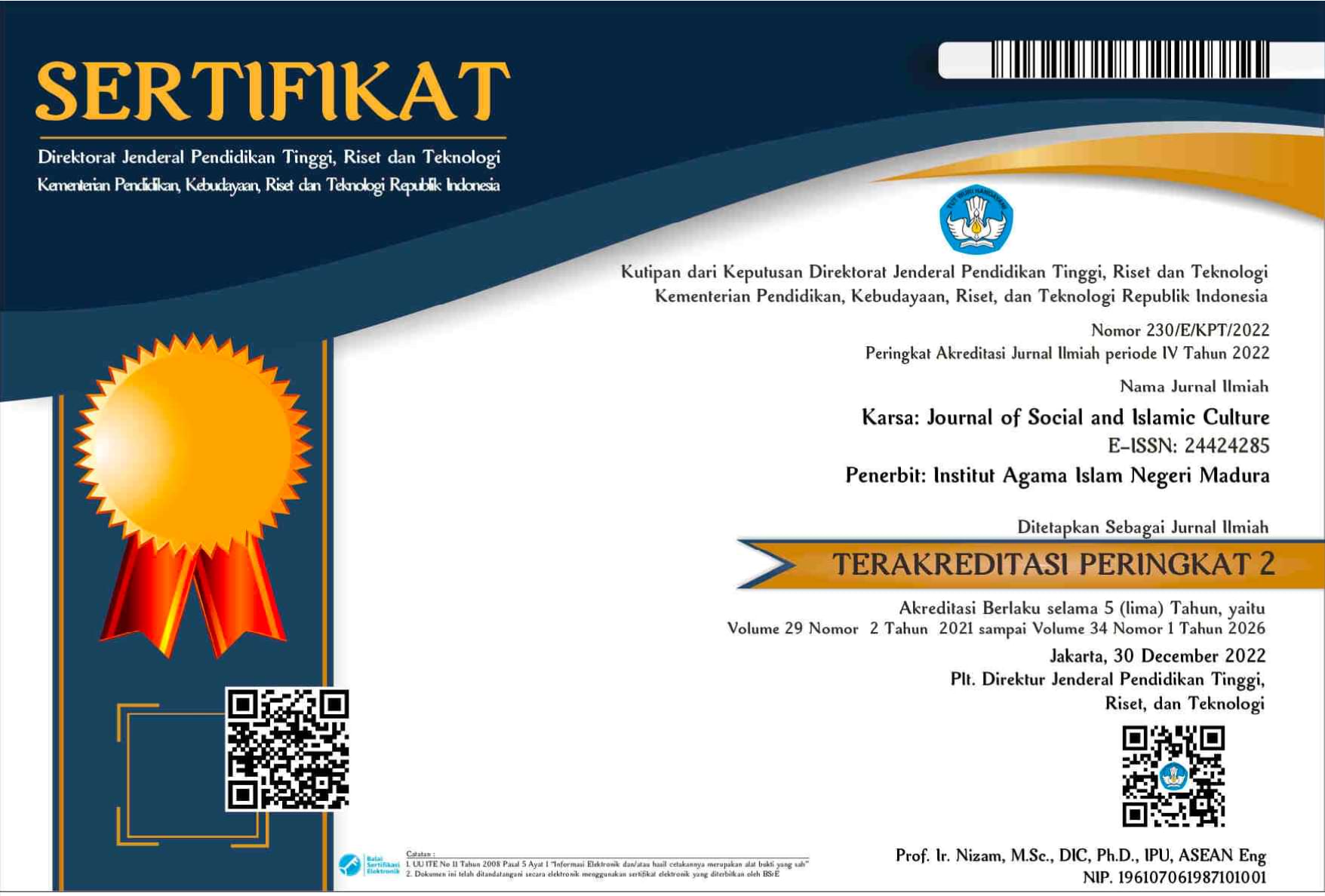Happiness Behind The Threat of Disaster: Women in The South Merapi Slope
 Abstract views: 224
,
Abstract views: 224
,
 PDF downloads: 141
PDF downloads: 141
Abstract
Downloads
References
Achmad, Subandi Taufik et al. “The Role of Spirituality, Gratitude and Hope in Predicting Post Traumatic Growth Among Survivor of Mount Merapi Eruptin in Yogyakarta Indonesia.” Faculty of Psychology, Universitas Gadjah Mada Yogyakarta, 2013.
Alfah, Dani. Bondan Sikoki, Roni Hermoko, and Wayan Suriastini “Demographic Differentials in Vulnerability and Resilience in a Disaster-prone Community: Evidence from the Longitudinal Study of Merapi 2012.” in The IUSSP Conference on Demographic Differential Vulnerability to Natural Disasters in the Context of Climate Change Adaptation, 2014. https:// activities.iussp.org/colloquedownload.php?filename=1814.pdf.
Biro Pusat Statistik. Indeks Kebahagiaan di Indonesia. Jakarta: BPS, 2015.
Bronto, Sutikno. “Fasies Gunung Api dan Aplikasinya.” Jurnal Geologi Indonesia 1, no. 2 (2006): 59-71.
Cahyanto, Sugeng Setyo et al. “Penguatan Kearifan Lokal Sebagai Solusi Ketahanan Pangan.” In Prosiding The 4th International Conference on Indonesian Studies, 2012, 835-851.
Donovan, Katherine. “Doing social volcanology: exploring volcanic culture in Indonesia.” Area 42, no. 1 (2010): 117–126.
Dove, Michael R. “Perception of volcanic eruption as agent of change on Merapi volcano, Central Java.” Journal of Volcanology and Geothermal Research, no. 172 (2008): 329-337. https://www. elsevier.com/locate/jvolgeores
Eun, Cho Sea et.al. “Living in Harmony with Disaster: Exploring Volcanic Hazard Vulnerability in Indonesia.” Sustainability 8, no. 848 (2016). doi: https://doi.org/10.3390/su8090848.
Ferrer-i-Carbonell, Ada. “Income and well-being: an empirical analysis of the comparison income effect.” Journal of Public Economics, 89 (2005): 997–1019. https://www.elsevier.com/locate/econbase
Goebel, Jan et al. “Natural Disaster, Environmental Concerns, Well-Being and Policy Action The Case of Fukushima.” Essen, Germany: CINCH-Health Economic Research Center, 2014.
Islam, Rabiul. “Vulnerability and Coping Strategies of Women in Disaster: A Study on Coastal Areas of Bangladesh.” The Arts Faculty Journal (2011).
Melick, Mary Evans and Logue, James N. “The Effect of Disaster on the Health and Well-Being of Older Women.” The International Journal of Aging and Human Development (1986).
Michalos, Alex C. “Education, Happiness and Wellbeing.” International Conference on ‘Is happiness measurable and what do those measures mean for public policy?” Rome: Research Centre of the European Commission, OECD, Centre for Economic and International Studies and the Bank of Italy, 2008.
Mungmachon, Roikhwanphut. “Knowledge and Local Wisdom: Community Treasure.” International Journal of Humanities and Social Science 2, no. 13 (2012).
Nazaruddin, Muzayin. “Natural Hazard and Semiotic Changes on the Slope of Mt. Merapi, Indonesia.” Master’s Thesis, Department of Semiotics, Faculty of Philosophy, University of Tartu, 2013.
Offer, Shira. “Free Time and emotional Well-Being: Do Dual-earner Mothers and Fathers differ?” Gender & Society 30, no.2 (2016): 213–239.
Permana, Raden Cecep et al. “Kearifan Lokal Tentang Mitigasi Bencana pada Masyarakat Baduy.” Makara Sosial Humaniora 15, no. 1, (2011): 67-76.
Pongsiri, Rattiya et al. “Conservation and Promotion Model for Local Wisdom Related to Bai-Sri-Su-Kwan Traditions, Beliefs and Ceremonies in the Isan Region.” Asian Social Science 9, no. 11 (2013).
Rehdanz, Katrin et al. “Well-being effects of a major negative externality: The case of Fukushima.” in Oldenburg Discussion Papers in Economics V-358-13. Oldenburg: Institut für Volkswirtschaftslehre, Universität Oldenburg, 2013). https:// www.econstor.eu/handle/ 10419/105042
Tuswadi, and Hayashi, Takehero. “Disaster Prevention Education in Merapi Volcano Area Primary Schools: Focusing on Student Perception and Teachers Performance.” in Procedia Environment Sciences 20 (2014): 668-677.
The journal operates an Open Access policy under a Creative Commons Non-Commercial Share-Alike license. Authors who publish with this journal agree to the following terms:
- Authors retain copyright and grant the journal right of first publication with the work simultaneously licensed under a Creative Commons Attribution License that allows others to share the work with an acknowledgement of the work's authorship and initial publication in this journal.
- Authors are able to enter into separate, additional contractual arrangements for the non-exclusive distribution of the journal's published version of the work (e.g., post it to an institutional repository or publish it in a book), with an acknowledgement of its initial publication in this journal.
- Authors are permitted and encouraged to post their work online (e.g., in institutional repositories or on their website) prior to and during the submission process, as it can lead to productive exchanges, as well as earlier and greater citation of published work.





















